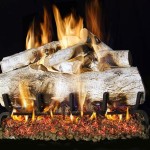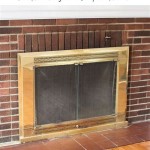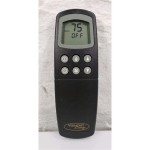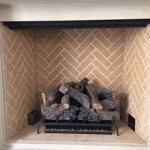Airtight Fireplace Insert Review: Maximizing Efficiency and Comfort
Fireplace inserts represent a significant upgrade to traditional open fireplaces, offering enhanced heating efficiency, improved safety, and reduced emissions. Airtight fireplace inserts, in particular, stand out due to their controlled combustion, which translates to longer burn times and more consistent heat output. This article provides a comprehensive review of airtight fireplace inserts, exploring their benefits, key features, factors to consider when purchasing, and a comparative analysis of leading models available in the market.
An airtight fireplace insert is designed to be installed within an existing fireplace opening. Unlike open fireplaces, which lose a significant portion of heat up the chimney, airtight inserts feature a sealed combustion chamber. This controlled environment regulates airflow, allowing for more complete and efficient burning of wood. This results in less wasted fuel, lower heating costs, and a reduced environmental impact. The airtight design also minimizes the risk of backdrafting and prevents smoke from entering the living space.
Understanding the Benefits of Airtight Design
Airtight design is the cornerstone of modern fireplace insert technology. It provides a significant advantage over traditional open fireplaces in several key areas. The primary benefit is increased heating efficiency. By controlling the air intake, the insert can maintain a steady and consistent burn, extracting more energy from the wood before it is exhausted. This means less wood is needed to achieve the desired room temperature, leading to substantial cost savings over time.
Another advantage of airtight design is improved air quality, both inside and outside the home. A controlled combustion process ensures that the wood burns more completely, reducing the amount of smoke and particulate matter released into the atmosphere. This is especially important for individuals with respiratory sensitivities and for complying with local environmental regulations. Furthermore, the sealed combustion chamber minimizes the risk of smoke spillage into the living space, creating a healthier indoor environment.
The airtight construction also contributes to enhanced safety. Traditional fireplaces can be prone to backdrafting, where smoke and harmful gases are drawn back into the house. Airtight inserts, with their controlled airflow, significantly reduce this risk. The sealed firebox also prevents embers and sparks from escaping into the room, minimizing the potential for fire hazards. The airtight door also prevents rapid changes in combustion due to sudden drafts within the house.
Key Features to Consider When Selecting an Airtight Fireplace Insert
Choosing the right airtight fireplace insert involves careful consideration of several key features. The size and heating capacity of the insert should be appropriate for the space it is intended to heat. Inserts are typically rated in terms of British Thermal Units (BTUs) per hour, and selecting an insert with sufficient BTU output is crucial for effective heating. An oversized insert can lead to overheating, while an undersized insert may not provide adequate warmth.
The materials used in the construction of the insert are also important. Cast iron and steel are common materials, each offering different advantages. Cast iron provides excellent heat retention and radiates heat evenly, while steel heats up quickly and is more resistant to cracking. The thickness of the metal is also a factor, as thicker materials tend to be more durable and long-lasting.
The type of combustion technology employed is another critical consideration. Some inserts use a single-stage combustion system, while others utilize a two-stage or catalytic combustion system. Two-stage and catalytic systems are more efficient and produce fewer emissions, making them a more environmentally friendly option. These systems often use a secondary burn chamber or a catalytic converter to burn off unburned gases and particulate matter.
The ease of use and maintenance of the insert should also be taken into account. Features such as an easy-to-use air control system, a large ash pan, and a self-cleaning glass door can significantly reduce the effort required to operate and maintain the insert. Regular cleaning and maintenance are essential for ensuring optimal performance and longevity.
Finally, the aesthetics of the insert should be considered. Fireplace inserts are available in a variety of styles, from traditional to contemporary, and selecting an insert that complements the existing décor is important. The size and shape of the viewing area, the type of door (e.g., arched, rectangular), and the available finishes all contribute to the overall aesthetic appeal.
Factors to Evaluate Before Purchase: Size, Efficiency, and Installation
Before purchasing an airtight fireplace insert, several factors must be thoroughly evaluated to ensure a satisfactory outcome. Determining the appropriate size of the insert is paramount. This involves accurately measuring the fireplace opening and calculating the square footage of the area to be heated. Consulting with a qualified professional is recommended to ensure that the insert is properly sized and that it meets all applicable building codes and safety regulations.
Heating efficiency is another critical factor. The efficiency of a fireplace insert is typically expressed as a percentage, indicating the amount of energy from the wood that is converted into usable heat. Higher efficiency ratings translate to lower fuel consumption and reduced heating costs. Look for inserts that are EPA-certified, as this indicates that they meet stringent emission standards and are designed for optimal efficiency. The EPA certification ensures that the insert has been tested and verified to meet specific performance criteria.
Installation is a crucial aspect that significantly impacts the safety and performance of the insert. It is highly recommended that installation be performed by a qualified and certified professional. Proper installation involves ensuring that the insert is properly connected to the chimney, that the chimney is clean and in good condition, and that all necessary safety measures are in place. Improper installation can lead to serious problems, including chimney fires, carbon monoxide poisoning, and reduced heating efficiency. A professional installer will also be able to provide guidance on the proper operation and maintenance of the insert.
The cost of the insert, including installation, should also be considered. Fireplace inserts can range in price from a few hundred dollars to several thousand dollars, depending on the features, size, and efficiency. It is important to obtain quotes from multiple dealers and installers and to compare prices and services carefully. Also, consider potential long-term cost savings in the form of lower fuel consumption and reduced maintenance expenses.
Finally, research the manufacturer's warranty and customer support policies. A comprehensive warranty provides peace of mind and protects against potential defects or malfunctions. It is also important to choose a manufacturer with a strong reputation for customer service and support. Read online reviews and check with the Better Business Bureau to assess the manufacturer's reliability and responsiveness.
Comparing Leading Airtight Fireplace Insert Models
The market offers a variety of airtight fireplace insert models, each with its own set of features and benefits. A comparison of several leading models can help in making an informed decision. Several factors influence the best insert for a given situation, including budget, aesthetic desires, and heating needs.
One popular model is the [Hypothetical Model A], known for its high heating capacity and efficient combustion system. This insert features a two-stage combustion system that minimizes emissions and maximizes heat output. It is constructed of heavy-duty steel for durability and features a large viewing area for enjoying the fire. Its average efficiency rating is 75% and it can heat up to 2000 square feet.
Another noteworthy model is the [Hypothetical Model B], which offers a more compact design and is well-suited for smaller fireplaces. This insert features a catalytic combustion system that provides exceptional efficiency and clean burning. It is made of cast iron and features a traditional design with an arched door. It has a slightly lower BTU output than Model A, but still can efficiently heat a 1500 square foot area.
For budget-conscious buyers, the [Hypothetical Model C] presents a compelling option. While it may not have all the bells and whistles of the more expensive models, it still provides respectable heating efficiency and a reliable performance, with its simple, yet efficient combustion system operating at 70% efficiency.
When comparing these models, consider the specific heating needs of the home, the available budget, and the desired aesthetic. It is advisable to consult with a qualified professional to determine which model is the most appropriate for the unique requirements of the space. Reading customer reviews can also provide valuable insights into the performance and reliability of each model. The goal is to strike a balance between performance, price, and aesthetics to find an airtight fireplace insert that meets the needs and preferences of the homeowner.

Top 5 Reasons To Consider A Fireplace Inserts Wi Ia Il

The Best Wood Burning Fireplace Inserts Or Stoves Ecohome

Best Fireplace Inserts Of April 2024 Forbes Home

The Best Wood Burning Fireplace Inserts Or Stoves Ecohome

Osburn 1700 Wood Fireplace Insert 1 800 Sq Ft Rockford Chimney

Ashley Hearth S 1200 Sq Ft Heating Area Firewood Stove Insert In The Wood Stoves Furnaces Department At Com

Osburn Inspire Wood Fireplace Insert Model Ob02045 Hearth S

Improve Heat Efficiency With Fireplace Inserts

Osburn 1700 Wood Fireplace Insert 1 800 Sq Ft Rockford Chimney

Osburn 2000 Wood Insert
Related Posts








